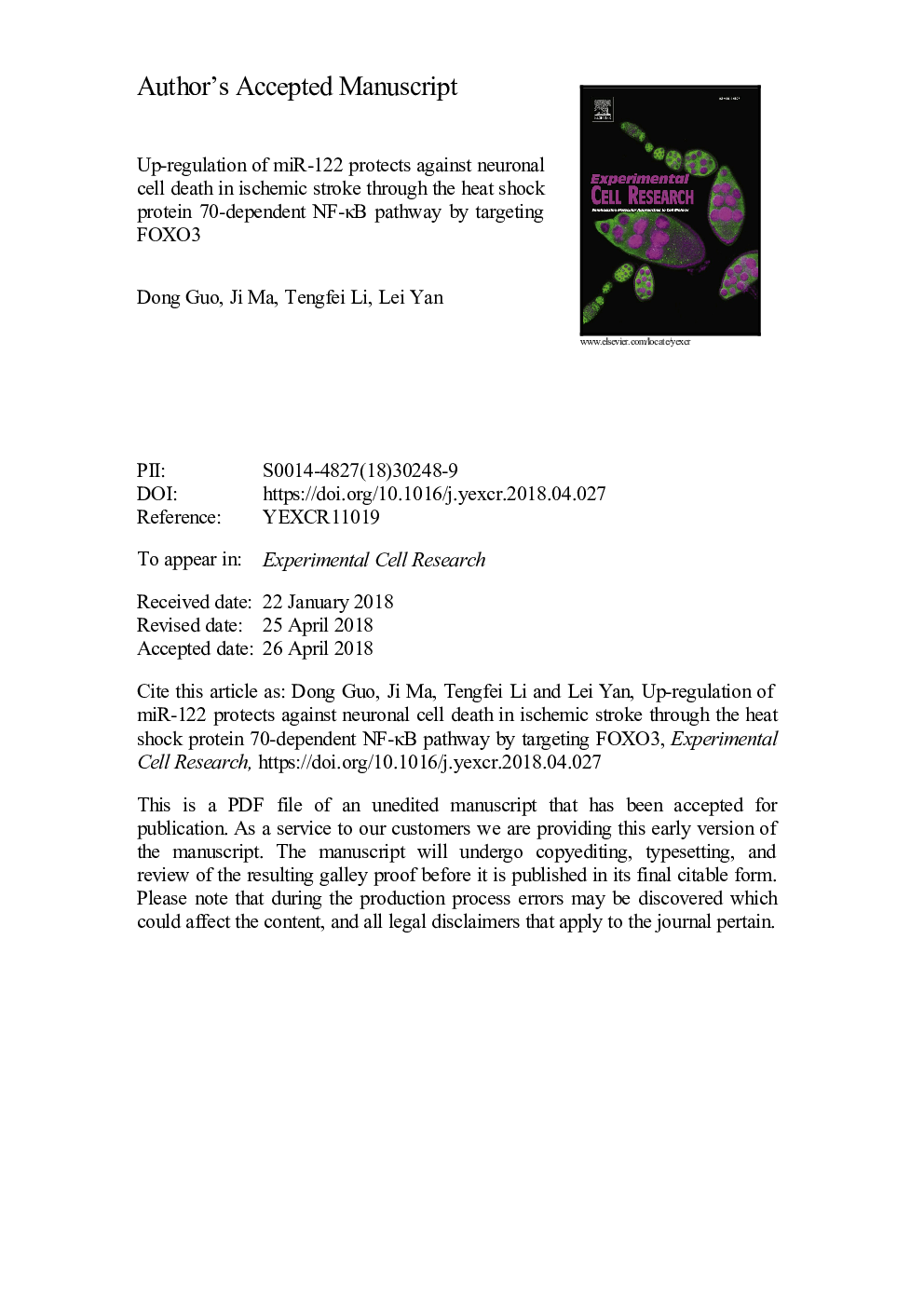| Article ID | Journal | Published Year | Pages | File Type |
|---|---|---|---|---|
| 8450345 | Experimental Cell Research | 2018 | 24 Pages |
Abstract
Dysfunction of the microRNA (miRNA) network has been emerging as a main regulator in ischemic stroke. Recently, studies have linked the deregulation of miR-122 to ischemic stroke. However, the specific role and molecular mechanism of miR-122 in ischemic stroke remain to be further investigated. Here, we found that miR-122 was decreased in mouse N2A neuroblastoma (N2A) cells after oxygen-glucose deprivation (OGD) and mouse brain after transient middle cerebral artery occlusion (MCAO). OGD treatment significantly increased N2A cell death and Caspase-3 activity, and decreased Bcl-2 protein expression. In addition, MCAO treatment induced severe mouse brain infarction, mitochondrial reactive oxygen species (ROS) production, and long-term neurological deficit. Gain-of-miR-122 function significantly suppressed OGD- and MCAO-induced injures in vitro and in vivo. Subsequently, miR-122 was validated to directly bind to the predicted 3â²-untranslated region (3â²-UTR) of FOXO3 gene, and the inhibitory effects of miR-122 on ischemic injury in vitro and in vivo were overturned by FOXO3 overexpression. Moreover, our results further revealed that miR-122-FOXO3 axis functioned via the heat shock protein 70 (HSP-70)-mediated NF-κB pathway. Collectively, our data suggest that miR-122 inhibits ischemic neuronal death through the HSP-70-dependent NF-κB pathway by targeting FOXO3. These findings raise the possibility that this regulatory net may contribute to the pathogenesis of the ischemic brain injury in stroke.
Related Topics
Life Sciences
Biochemistry, Genetics and Molecular Biology
Cancer Research
Authors
Dong Guo, Ji Ma, Tengfei Li, Lei Yan,
